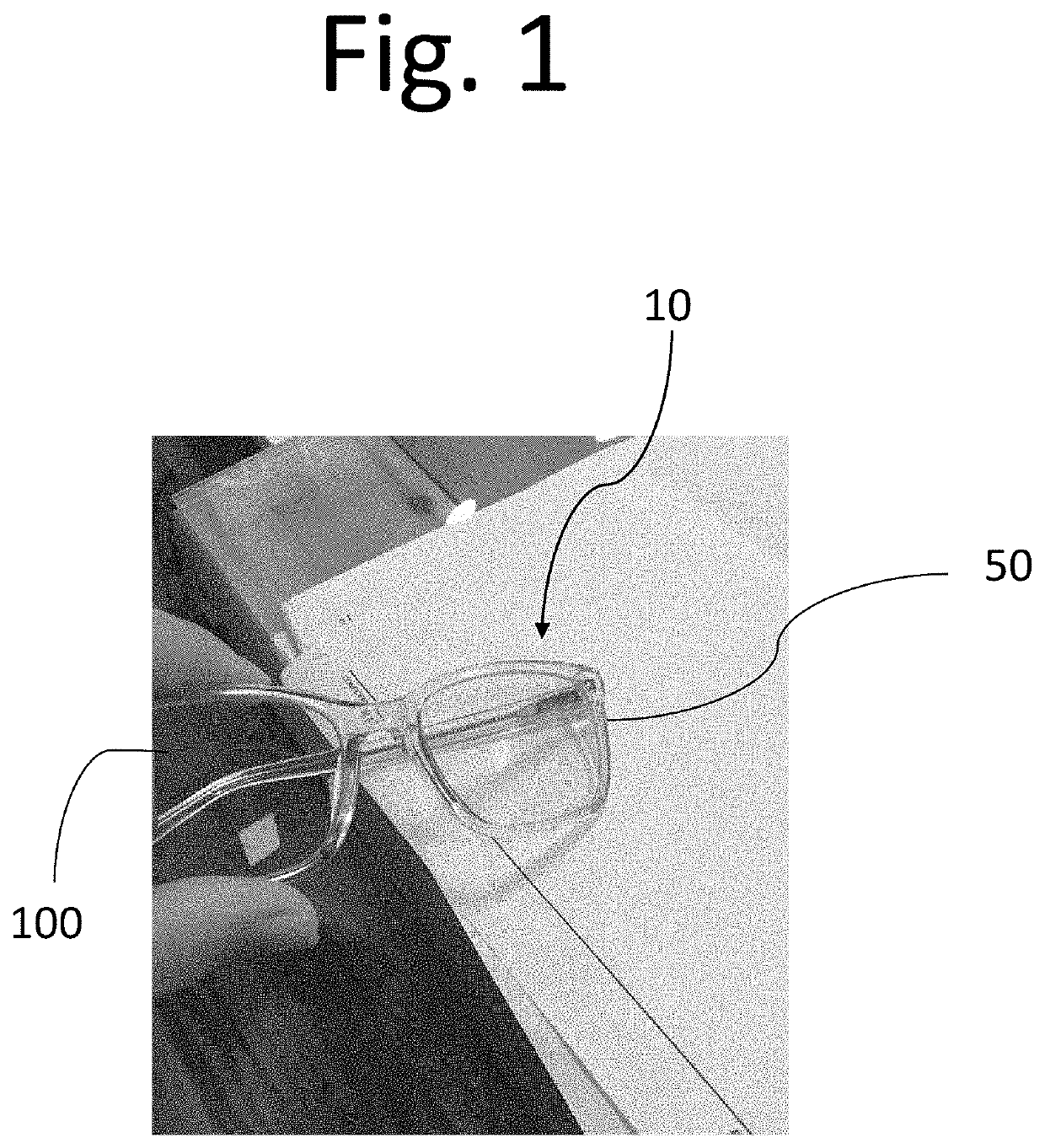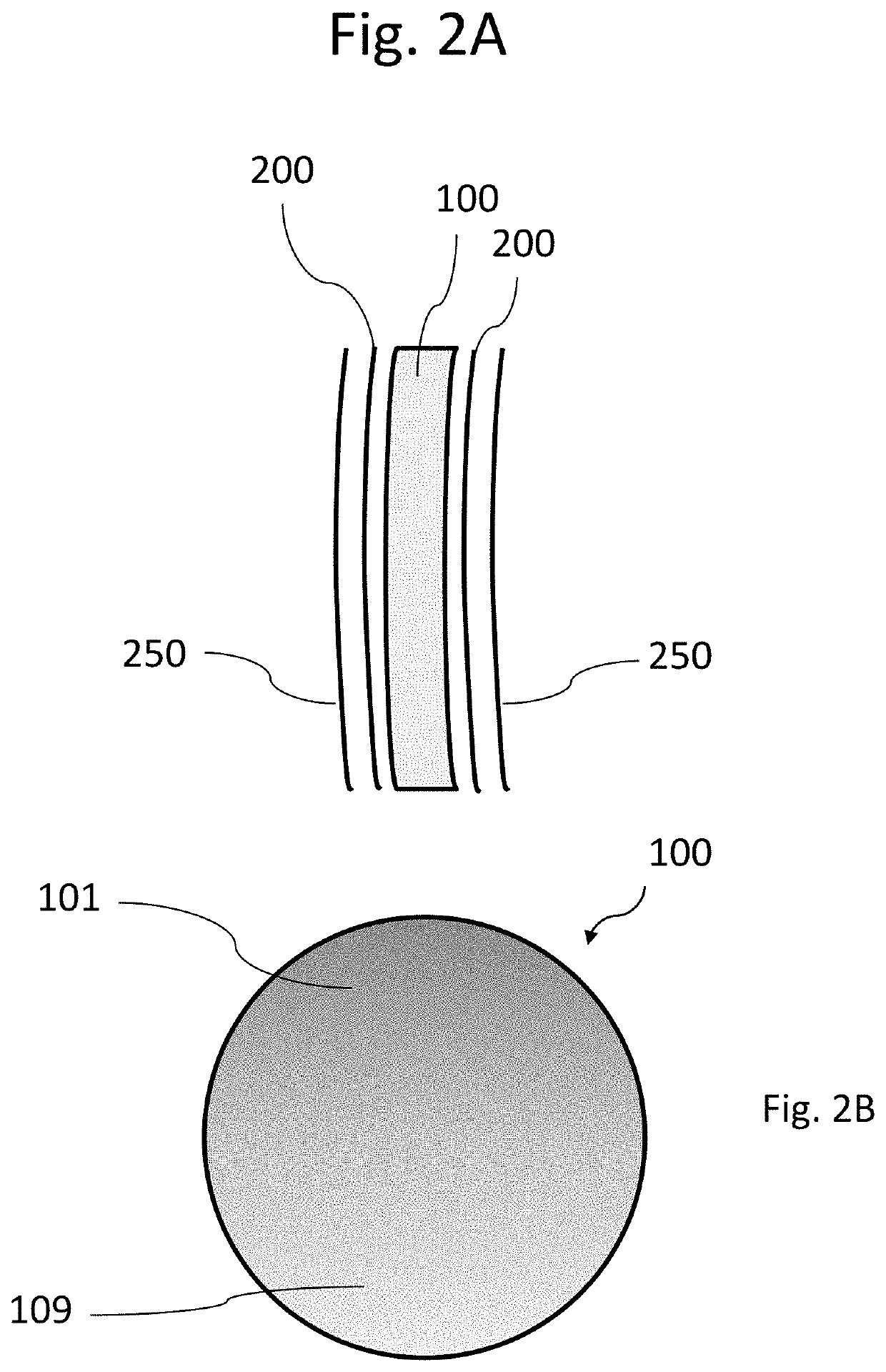Light filtering lenses
a technology of light filtering and lens, applied in the field of light filtering lenses, can solve the problems of difficult treatment, poor understanding and difficult treatment of short wavelength blue light, and can be uncomfortable for subjects with migraines or other tension-type headaches, so as to reduce the effect of blue light on the user
- Summary
- Abstract
- Description
- Claims
- Application Information
AI Technical Summary
Benefits of technology
Problems solved by technology
Method used
Image
Examples
Embodiment Construction
[0033]Following are more detailed descriptions of various related concepts related to, and embodiments of, methods and apparatus according to the present disclosure. It should be appreciated that various aspects of the subject matter introduced above and discussed in greater detail below may be implemented in any of numerous ways, as the subject matter is not limited to any particular manner of implementation. Examples of specific implementations and applications are provided primarily for illustrative purposes.
[0034]Referring to the Figures, FIGS. 1-6B illustrate a light filtering lens that has a curved, transparent, glass or polymer member 100 designed to be disposed within a rim portion 50 of a glasses frame member 10. An optically filtering dye coating with a rose tint 200 is disposed on the curved, transparent, glass or polymer member 100 and is designed to filter up to twenty-five percent of light substantially between 380 nanometers and 700 nanometers. Glass or polymer member...
PUM
| Property | Measurement | Unit |
|---|---|---|
| transparent | aaaaa | aaaaa |
| transparent | aaaaa | aaaaa |
| transparent | aaaaa | aaaaa |
Abstract
Description
Claims
Application Information
 Login to View More
Login to View More - R&D
- Intellectual Property
- Life Sciences
- Materials
- Tech Scout
- Unparalleled Data Quality
- Higher Quality Content
- 60% Fewer Hallucinations
Browse by: Latest US Patents, China's latest patents, Technical Efficacy Thesaurus, Application Domain, Technology Topic, Popular Technical Reports.
© 2025 PatSnap. All rights reserved.Legal|Privacy policy|Modern Slavery Act Transparency Statement|Sitemap|About US| Contact US: help@patsnap.com



